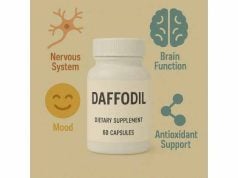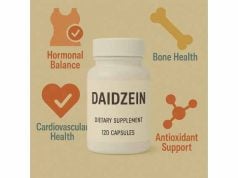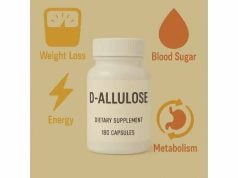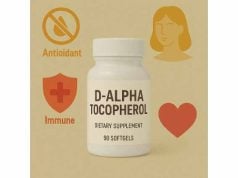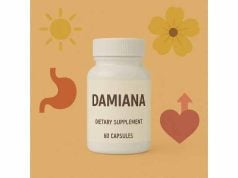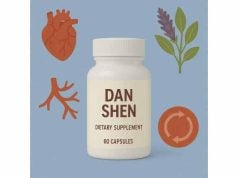
DMBA (1,3-dimethylbutylamine), sometimes marketed as AMP citrate, is a laboratory-made stimulant that appeared in some pre-workout and weight-loss supplements over the past decade. It’s chemically related to DMAA and is often promoted for energy, focus, and fat-burning. Unlike nutrients or botanicals, DMBA is a synthetic sympathomimetic—it can raise heart rate and blood pressure in ways similar to other stimulants. Importantly, there’s no high-quality human safety data and no approved medical use. U.S. regulators consider products labeled with DMBA to be adulterated because companies have not met legal safety requirements. Sports organizations treat DMBA as a prohibited stimulant. This guide explains what DMBA is (and isn’t), how it’s labeled, the evidence behind the claims, the risks you should know about, who should avoid it, and practical, safer alternatives if you want more energy or performance support.
Essential Insights for DMBA Users
- No proven benefits in controlled human studies; evidence consists mainly of lab analyses and product testing.
- Products listing DMBA (or aliases like “AMP citrate”) are considered adulterated in the U.S. and should be avoided.
- No approved or safe dosage exists; for consumers the only evidence-based “dose” is 0 mg/day (avoid use).
- Adverse effects may include elevated blood pressure, palpitations, chest pain, and risk of positive doping screens.
- Athletes in drug-tested sport, people with cardiovascular disease, hypertension, anxiety, pregnancy, or on stimulants should avoid DMBA.
Table of Contents
- What is DMBA and how does it work?
- Does DMBA work? What the claims and data show
- How to spot DMBA on labels
- Safety risks and side effects you should know
- Who should avoid DMBA and legal status
- Safer alternatives and practical next steps
What is DMBA and how does it work?
DMBA (1,3-dimethylbutylamine) is a synthetic amine designed to act as a sympathomimetic stimulant—a compound that can trigger parts of the nervous system that handle “fight-or-flight” responses. Structurally, it resembles DMAA (1,3-dimethylamylamine); both belong to a family of small amines sometimes called “aliphatic amines.” These compounds can interact with adrenergic pathways, which helps explain classic stimulant-type effects: increased alertness, reduced perception of fatigue, appetite suppression, higher heart rate, and elevated blood pressure.
DMBA appeared in the mid-2010s as a replacement stimulant when related ingredients drew regulatory scrutiny. Companies often gave it marketing names—most notably “AMP citrate”—to imply a natural source or to make the label sound benign. In reality, “citrate” refers only to the counter-ion (citrate salt), not to a plant origin. Independent testing detected DMBA in some supplements and, in a few products, in combination with other stimulants (for example, higenamine, octodrine/DMHA, oxilofrine), effectively creating multi-stimulant cocktails whose combined risks are unpredictable.
Two points separate DMBA from nutrients:
- No physiological requirement: DMBA is not a vitamin, mineral, or amino acid your body needs.
- No clinical dose-finding evidence: Unlike approved medicines, DMBA lacks dose-response or safety studies in humans. What exists are chemical analyses showing that products have contained DMBA (sometimes at varying amounts) and assessments by regulators concluding that firms did not meet legal safety obligations for a “new dietary ingredient.”
Based on what’s known about related stimulants and the limited laboratory evidence, DMBA likely raises sympathetic tone—which can transiently increase alertness and perceived energy but also stress the cardiovascular system, especially when mixed with caffeine or other stimulants. The absence of human pharmacokinetic data (how quickly it’s absorbed, metabolized, and cleared) leaves critical gaps in understanding risks like arrhythmias, hypertensive crises, or drug interactions.
Bottom line: DMBA behaves like a drug-like stimulant, not a nutrient. It has no established medical indication, no accepted safe dose, and no human efficacy trials showing benefits that would outweigh its risks.
Does DMBA work? What the claims and data show
Marketing for DMBA-containing products typically promises explosive energy, laser focus, and fat-loss support—language borrowed from earlier stimulant waves (ephedra, DMAA, DMHA). But when you look for controlled human studies, you won’t find them. The best-known peer-reviewed publications on DMBA do not test performance or fat loss; they identify and quantify DMBA in supplements, detail its presence alongside other stimulants, and examine how often these products flout regulatory warnings.
What do those studies show?
- Presence in products: Analytical work published in drug-testing and toxicology journals confirmed DMBA (and aliases like “AMP citrate”) in multiple supplements from U.S. sellers. This is chemical confirmation, not proof of benefit.
- Multi-stimulant mixes: Investigators have repeatedly found supplements containing several stimulants at once, sometimes including DMBA. In a 2021 analysis of weight-loss/sports products labeled with deterenol, researchers detected nine prohibited stimulants across 17 brands; DMBA was one of them, present at ~1.8 to 6.6 mg per serving in that specific sample set. Mixtures raise safety concerns because combined stimulants can amplify cardiovascular effects and make adverse events more likely.
- Regulatory follow-through: Even after public FDA notices about prohibited stimulants in supplements (2013–2016), follow-up purchases frequently found the same or new stimulants still present. This underscores a key consumer reality: labels are not reliable for these categories, and enforcement can lag behind the marketplace.
If no trials exist, where do performance claims come from? Primarily from extrapolation: DMBA looks like other stimulants, and stimulants can reduce perceived exertion or increase arousal. But without randomized trials, you cannot balance marginal performance benefits against actual risks. For perspective, even caffeine—the best-studied legal stimulant—has a clear, modest effect size and dose guidance, and yet its side effects become problematic in some people. With DMBA, both the effect size and risk curve are unknown.
For fat loss, the logic is similar. Stimulants can modestly raise energy expenditure and suppress appetite acutely, but long-term weight management depends on dietary pattern, activity, sleep, and medications with proven benefit in appropriate patients. Unregulated stimulant cocktails do not substitute for those.
Practical takeaways:
- Claims outpace evidence. There are no clinical trials demonstrating that DMBA improves strength, endurance, time-to-exhaustion, or weight loss in humans.
- In the real world, DMBA often arrives in combinations with other stimulants, further blurring any signal and raising risk.
- The regulatory status (adulterated, not lawfully marketed as a dietary ingredient) eliminates any argument for “try and see”—there’s no legal or safety basis for use.
How to spot DMBA on labels
DMBA rarely appears under a single, obvious name. Companies have used multiple aliases and salts, and sometimes they tuck it into proprietary blends where amounts are not disclosed. Spotting it takes a careful look at the Supplement Facts panel and the ingredients list. Names you may see include:
- 1,3-Dimethylbutylamine (the chemical name)
- AMP citrate (also listed simply as AMP)
- 2-Amino-4-methylpentane citrate
- 4-Amino-2-methylpentane citrate
- 4-Amino methylpentane citrate
- 4-AMP citrate
- 4-Methyl-2-pentanamine
Those aliases matter. They have shown up on real-world labels and are specifically called out by regulators when describing products that list DMBA as an ingredient. Marketing claims may also hint at stimulant activity without naming it clearly—phrases like “extreme energy blend,” “neuro-drive matrix,” or “performance intensifier” in powders, capsules, or shots are common.
Tips to protect yourself when reviewing a label:
- Read past the front. The front of the tub or bottle is marketing; the ingredients list is where the truth lives—if it’s disclosed at all.
- Watch for proprietary blends. If a product uses a blend name with a total amount (e.g., 750 mg) but lists several stimulants and botanicals under it, you cannot know how much of each you’re getting. This is a red flag for stimulant risk.
- Be skeptical of “natural” claims. Some labels have claimed that “AMP citrate” or DMBA is naturally found in certain teas; independent laboratory work and regulatory reviews have not accepted those claims as a basis for safety or lawful marketing.
- Verify third-party testing. For performance or weight-management supplements, look for certifications from programs that test for prohibited substances (e.g., NSF Certified for Sport, Informed Choice). Even then, avoid any product insinuating DMAA/DMBA/DMHA-like effects.
- Check your sport’s lists. If you are drug-tested, review your federation’s or anti-doping agency’s prohibited list and consult team medical staff before trying a product. Stimulant language like “intense focus,” “thermogenic,” or “hardcore energy” should prompt extra caution.
Finally, remember that a label can be wrong—either by omission (ingredient not listed) or misstatement (ingredient nicknamed or mislabeled). Multiple investigations have found banned or experimental stimulants in products even after public enforcement actions. The most reliable way to avoid DMBA is to avoid the product categories that have historically included it: high-stim pre-workouts, “fat burners,” and thermogenic mixes from brands without rigorous third-party oversight.
Safety risks and side effects you should know
Because DMBA lacks human dosing studies, the full risk profile is unknown. What we do know, from chemistry, experience with structurally similar stimulants, and product-testing research, points to cardiovascular and neurologic risks—especially when DMBA is combined with other stimulants such as caffeine, synephrine, higenamine, deterenol, octodrine (DMHA), oxilofrine, or PEA derivatives.
Likely risks (by analogy and pharmacology):
- Cardiovascular: elevated blood pressure, increased heart rate, palpitations, chest pain, shortness of breath. In susceptible individuals, stimulants of this class can trigger arrhythmias or precipitate ischemic events (e.g., coronary spasm).
- Neurologic/psychiatric: jitteriness, anxiety, agitation, insomnia, headaches; at higher exposures, risk of panic or psychomotor agitation.
- Thermoregulatory and dehydration: stimulants may raise core temperature and increase sweating, particularly risky during hard training, heat, or dehydration.
- Drug interactions: other stimulants (including strong coffee or energy drinks) stack with DMBA; certain medications (e.g., SNRIs, bupropion, decongestants containing pseudoephedrine) may also compound sympathetic effects.
- Unknowns: Without pharmacokinetic data, we lack clarity on onset, peak effects, and half-life, which complicates timing around training, competition drug-testing windows, and sleep.
Real-world product concerns: Investigators have repeatedly found multiple stimulants combined in single products—sometimes three or four in one scoop—at quantities ranging from a few milligrams to dozens of milligrams per serving. Even where each amount seems “small,” the synergy among stimulants and the presence of unlisted ingredients raise the odds of adverse events. In several surveys, products continued to contain prohibited stimulants long after public enforcement notices—suggesting that marketplace risk persists despite warnings.
Why “dose responsibly” is not a solution: With caffeine, guidelines exist (e.g., ≤3–6 mg/kg pre-event) and decades of data inform safe use for most healthy adults. With DMBA, there is no validated dose, no agreed upper limit, and no guarantee that the label reflects what’s actually inside. The safest course is non-use.
What to do if you’ve taken a DMBA product:
- Stop immediately.
- Monitor symptoms—seek medical care for chest pain, severe headache, shortness of breath, syncope, or a racing/irregular heartbeat.
- Save the product and receipt; report the event to your clinician and—if in the U.S.—consider filing a report via your local health authority or FDA’s Safety Reporting portal. This helps regulators identify patterns.
Bottom line: In the absence of proven benefits and with well-founded safety concerns, the risk–benefit balance for DMBA is unfavorable. The conservative, evidence-aligned recommendation is to avoid DMBA-containing products altogether.
Who should avoid DMBA and legal status
Who should avoid DMBA outright:
- Athletes in drug-tested sports. DMBA has been treated as a prohibited stimulant by major anti-doping bodies and U.S. military programs. Using it risks adverse analytical findings and sanctions.
- Individuals with cardiovascular disease (hypertension, coronary disease, arrhythmias), stroke history, or structural heart disease.
- Pregnant or breastfeeding individuals (safety unknown; stimulant exposure is not justified).
- People with anxiety disorders, panic, insomnia, or a history of stimulant sensitivity.
- Anyone taking other stimulants (including decongestants) or medications that may increase blood pressure/heart rate.
Regulatory status in the United States (what it means for you):
- Not lawfully marketed as a dietary ingredient. FDA states it is not aware of any evidence that DMBA was marketed as a dietary ingredient before October 15, 1994 (the legal cut-off for “old” ingredients). That means DMBA is a new dietary ingredient requiring either proof of safe use in food as not chemically altered or a premarket safety notification demonstrating it is reasonably expected to be safe. Companies marketing DMBA have not met these conditions, so supplements listing DMBA are considered adulterated.
- Warning letters and actions. FDA has issued warning letters to firms marketing products with DMBA on the label and maintains a public directory describing its views and actions on such ingredients. While enforcement actions occur, products can still circulate online, so consumer vigilance is essential.
Sport and military context:
- Anti-doping programs and military readiness initiatives (e.g., U.S. Operation Supplement Safety) advise avoiding DMBA and related stimulants. Some programs maintain DoD prohibited-ingredient lists and warn that products with DMBA/AMP citrate can jeopardize careers or lead to disciplinary action.
Outside the U.S.:
- Public-health agencies and independent labs in multiple countries have identified DMBA in supplements and flagged safety concerns similar to those in the U.S. Depending on the jurisdiction, sale may be prohibited or products may be subject to seizure/recall.
Key practical implications:
- You cannot rely on “it’s on the shelf, so it must be legal.” The supplement supply chain includes third-party sellers and importers; items can remain available even when regulators object.
- Third-party certification helps but isn’t a free pass; the safest choice is to avoid high-stimulant categories entirely and choose evidence-based nutrition and training strategies.
Safer alternatives and practical next steps
If you’re considering DMBA for energy, focus, or fat loss, pause and evaluate what you actually want—and choose safer, proven approaches instead.
For training energy and focus
- Sleep and timing: A consistent 7–9 hours of sleep and scheduling high-intensity work when you’re naturally most alert beat untested stimulants every time.
- Hydration and carbohydrates: Even mild dehydration or low glycogen can make workouts feel flat. A small carb dose (20–40 g) 30–60 minutes pre-session can improve perceived exertion for many athletes.
- Caffeine (used wisely): If you tolerate it, 1–3 mg/kg about 30–60 minutes pre-workout has the best evidence among legal options. Avoid late-day dosing and stacking with other stimulants.
- Creatine monohydrate: For strength/power, 3–5 g/day improves high-intensity performance and lean mass over weeks—without stimulant risks.
- Beetroot nitrate: For endurance, 300–600 mg nitrate (from concentrated beet juice) 2–3 hours pre-event can modestly improve exercise efficiency for some.
For weight management
- Diet quality and protein: Emphasize minimally processed foods and adequate protein (1.2–1.6 g/kg/day) for satiety.
- Activity and resistance training: Preserve lean mass and metabolic rate with 2–3 resistance sessions/week plus daily movement.
- Clinician-guided options: If you have obesity or metabolic risk, discuss evidence-based medications or structured programs. They’re regulated, monitored, and backed by trials—unlike DMBA.
How to shop smarter (and avoid DMBA)
- Choose brands with transparent labels, no proprietary blends, and third-party testing for banned substances (e.g., NSF Certified for Sport).
- Steer clear of products promising “extreme,” “hardcore,” or “rapid fat loss”—especially powders with stimulant-style blends.
- If you’re in a drug-tested sport, run every product past your team doctor or dietitian and verify it against your anti-doping agency’s resources.
If you already bought a product and suspect it contains DMBA or related stimulants, consider not using it, contacting the seller for a refund, and reporting the product to your national authority if labeling seems misleading or unsafe.
The big picture: Supplements can play a useful role—when they’re the right ones. DMBA is not one of them. For most goals, you’ll get better, safer results by dialing in sleep, nutrition, training, and well-studied supplements instead of chasing risky shortcuts.
References
- DMBA in Dietary Supplements 2023 (Regulatory Overview)
- Nine prohibited stimulants found in sports and weight loss supplements: deterenol, phenpromethamine (Vonedrine), oxilofrine, octodrine, beta-methylphenylethylamine (BMPEA), 1,3-dimethylamylamine (1,3-DMAA), 1,4-dimethylamylamine (1,4-DMAA), 1,3-dimethylbutylamine (1,3-DMBA) and higenamine 2021 (Clinical Toxicology)
- Prohibited Stimulants in Dietary Supplements After Enforcement Action by the US Food and Drug Administration 2018 (JAMA Internal Medicine)
- A synthetic stimulant never tested in humans, 1,3-dimethylbutylamine (DMBA), is identified in multiple dietary supplements 2015 (Drug Testing and Analysis)
- Dietary Supplements as Source of Unintentional Doping 2022 (Review)
Medical Disclaimer
This article is for general education and is not a substitute for personalized medical advice, diagnosis, or treatment. Do not start or stop any supplement or medication without consulting a qualified health professional. Products listing DMBA (or its aliases) are considered adulterated in the United States and may be prohibited in sport. If you experience chest pain, shortness of breath, severe headache, a racing or irregular heartbeat, or other concerning symptoms after taking a stimulant-type supplement, seek medical care immediately.
If this guide helped you, please consider sharing it on Facebook, X (formerly Twitter), or your favorite platform, and follow us for more clear, evidence-based health content. Your support helps us continue producing quality resources.

